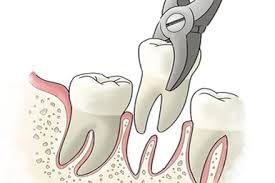Looking for dental extractions? Call Preventive Dental today on
020 8874 3877
What is an extraction?
A dental extraction is the removal of teeth from the dental alveolus (socket) in the alveolar bone. Whether you have a tooth that is giving you pain, is dead or decayed, an extraction can remove the tooth and give relief from pain.
We have been a dental practice in Southfields for over 30 years and have built a reputation for offering affordable, effective and highly professional treatment.
Why would I need an extraction?
Extractions are performed for a wide variety of reasons, but most commonly to remove teeth which have become unrestorable through tooth decay, periodontal disease or dental trauma, especially when they are associated with toothache. Sometimes wisdom teeth are impacted (stuck and unable to grow normally into the mouth) and may cause recurrent infections of the gum. In orthodontics if the teeth are crowded, sound teeth may be extracted to create space so the rest of the teeth can be straightened.
Extractions are often categorized as “simple” or “surgical”
Simple extractions are performed on teeth that are visible in the mouth, usually under local anaesthetic, and require only the use of instruments to elevate and/or grasp the visible portion of the tooth. Typically the tooth is lifted using an elevator, and using dental forceps, rocked back and forth until the periodontal ligament has been sufficiently broken and the supporting alveolar bone has been adequately widened to make the tooth loose enough to remove. Typically, when teeth are removed with forceps, slow, steady pressure is applied with controlled force.
Surgical extractions involve the removal of teeth that cannot be easily accessed, either because they have broken under the gum line or because they have not erupted fully. Surgical extractions almost always require an incision. In a surgical extraction the doctor may elevate the soft tissues covering the tooth and bone and may also remove some of the overlying and/or surrounding jawbone tissue with a drill or osteotome. Frequently, the tooth may be split into multiple pieces to facilitate its removal. Surgical extractions are usually performed under sedation.
What will happen during the extraction?
Tooth extraction is usually relatively straightforward, and the vast majority can be usually performed quickly while the individual is awake by using local anaesthetic injections to eliminate painful sensations. Local anaesthetic blocks pain, but mechanical forces are still felt. Some teeth are more difficult to remove for several reasons, especially related to the tooth’s position, the shape of the tooth roots and the integrity of the tooth. If a tooth is buried in the bone, a surgical or trans alveolar approach may be required, which involves cutting the gum away and removal of the bone which is holding the tooth in with a surgical drill. After the tooth is removed, stitches are used to replace the gum into the normal position.

What will happen after the extraction?
Immediately after the tooth is removed, a bite pack is used to apply pressure to the tooth socket and stop the bleeding. After a tooth extraction, dentists usually give advice which revolves around not disturbing the blood clot in the socket by not touching the area with a finger or the tongue, by avoiding vigorous rinsing of the mouth and avoiding strenuous activity. Sucking, such as through a straw, is to be avoided. If the blood clot is dislodged, bleeding can restart, or alveolar osteitis (“dry socket”) can develop, which can be very painful and lead to delayed healing of the socket. Smoking is avoided for at least 24 hours as it impairs wound healing and makes dry socket significantly more likely. Most advise hot salt water mouth baths which start 24 hours after the extraction.
Courtesy of Wikipedia – en.wikipedia.org/wiki/Dental_extraction

